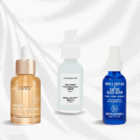Table of Contents:
What Exactly Is Hyperpigmentation, And Why Does It Happen?
Kojic Acid – A Natural Solution for Skin Brightening
Kojic Acid for Hyperpigmentation: Why It Works So Well?
How to Add Kojic Acid to Your Skincare Routine?
Alpha Arbutin – A Safer Take on Hydroquinone
Why Alpha-Arbutin Deserves a Spot in Your Skincare?
How to Add Alpha-Arbutin to Your Skincare Routine?
Kojic Acid or Alpha Arbutin?
Conclusion
Our Top Picks
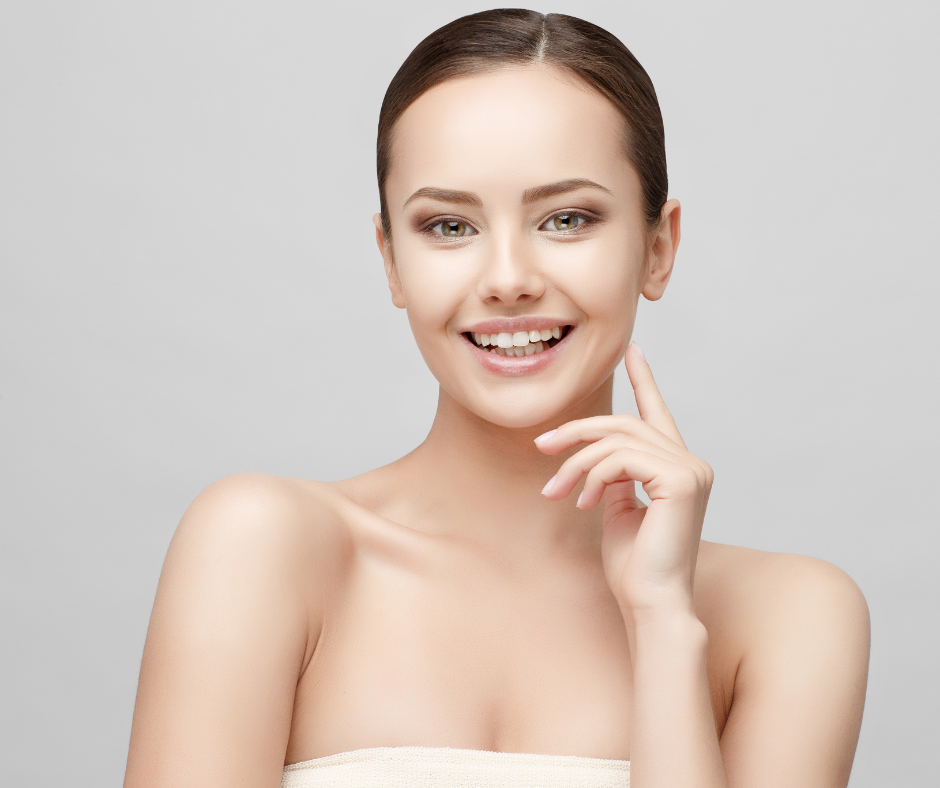
Dark spots from hyperpigmentation have been an unwelcome guest in many of our skincare journeys. These uneven patches, often a few shades darker than our natural tone, can quietly erode our confidence. Why? Because they draw attention and sometimes make us feel like they define how we look more than our true selves do.
Whether it’s too much sun exposure or the aftermath of breakouts, dark spots tend to stick around as reminders of those small missteps, and they’re notoriously tough to fade. Uneven skin tone, rough texture, and age spots can age your appearance even more than wrinkles.
So yes, it’s completely valid to dislike pigmentation. But rather than just loathing it, let’s explore targeted solutions that can help diminish those stubborn marks.
Healing your skin from pigmentation requires more than just products; it takes consistent effort, patience, and the right ingredients. With countless creams and serums promising to erase dark spots, it’s easy to wonder which ones deliver results.
Although vitamin C and retinol have been the go-to solutions for hyperpigmentation, recent breakthroughs have introduced new ingredients that are just as effective and far less likely to disappoint.
Let’s dive into two powerhouse ingredients that dermatologists swear by: Alpha Arbutin and Kojic Acid. Both are known for their skin-brightening abilities and tackle pigmentation in their own effective ways.
Curious which one deserves a spot in your routine? Stick around to find out which of these complexion enhancers can help you achieve that radiant, even-toned glow sooner than you think!
What Exactly Is Hyperpigmentation, And Why Does It Happen?
While hyperpigmentation may be harmless physically, it often takes a toll on our confidence and social interactions, sometimes even leading to deeper psychological effects. That’s why understanding it and learning how to manage it is so important.
Hyperpigmentation is an umbrella term that includes acne scars, sun spots, melasma, and other forms of uneven skin tone. It happens when the skin produces excess melanin, the pigment responsible for your skin’s color. And while those dark patches can be incredibly frustrating, they’re not impossible to treat.
Triggers like acne, hormonal changes, sun exposure, and aging can all contribute to melanin overproduction. But here’s the good news: even though hyperpigmentation can be stubborn and slow to fade, it is treatable. And we’re about to show you how.
Kojic Acid – A Natural Solution for Skin Brightening
This natural skin brightener has earned its popularity for all the right reasons. Loved for its gentle touch, Kojic Acid helps enhance your complexion without being harsh on the skin. It targets hyperpigmentation by blocking tyrosinase, an enzyme that plays a key role in melanin production.
By slowing down melanin formation, Kojic Acid effectively fades dark spots and uneven tone, making it a safe and reliable choice for gentle skin brightening.
Kojic acid, commonly used in skincare, is usually obtained through the fermentation of certain types of fungi. It can also be found in natural sources like soy, rice, and other grains. As a fungal byproduct, kojic acid is packed with antioxidants that help protect the skin from environmental damage and toxins, making it a powerful yet gentle addition to your skincare routine.
Kojic acid is highly effective at penetrating the skin and blocking melanin production, which is why it’s a favorite in hyperpigmentation treatments. As a proven tyrosinase inhibitor, it not only fades existing dark spots but also helps prevent future discoloration. This makes it an ideal choice for treating melasma, acne marks, and other persistent patches of pigmentation.
Hydroquinone might be the gold standard in skin-brightening treatments, but kojic acid stands out as a gentler alternative. Its natural origin and milder action make it appealing to many.
However, while kojic acid is naturally derived and generally milder, it’s not entirely without side effects. Some users may still experience irritation, such as redness or swelling, especially with prolonged use.
Kojic Acid for Hyperpigmentation: Why It Works So Well?
Let’s take a look at what makes kojic acid a standout ingredient in the world of pigmentation treatments. These powerful properties make it more than just a skin brightener:
- Antioxidant
- Antimicrobial
- Exfoliant
If you’ve had a long battle with hyperpigmentation and your sensitive skin hasn’t responded well to treatments like hydroquinone or retinoids, it might be time to turn to kojic acid, your gentle yet powerful skincare ally. Kojic acid is well-tolerated by most sensitive skin types, making it a great alternative when harsher ingredients just don’t work.
Whether it’s sun damage, melasma, post-acne marks, dark spots from injuries, or even under-eye pigmentation, kojic acid can help fade them all, revealing a more balanced, radiant complexion.
How to Add Kojic Acid to Your Skincare Routine?
Kojic acid is now commonly found in creams, serums, gels, exfoliating pads, and similar skincare products, usually in concentrations between 1 and 4%.
Whether it’s acne marks, melasma, dark spots, or discoloration from minor scratches and bumps, kojic acid can help brighten your complexion when added to your skincare routine. You can use it in the form of a brightening pad, a potent serum, or even a face mask.
Kojic acid can be applied once or twice daily, depending on the concentration and the other ingredients in the product. It’s important to start slowly and adjust usage based on how your skin reacts.
Did you know?
Many anti-aging skincare products aim to reduce dark spots and promote an even skin tone, and kojic acid is one powerhouse ingredient that helps do just that.
Despite being called an acid, kojic acid is naturally derived and is known for its ability to lighten stubborn discoloration, whether it’s sunspots, age spots, or those lingering marks left behind by breakouts.
It’s generally mild, but everyone’s skin is different. So, before you dive in, do a patch test first. Better safe than sorry. There’s always a chance of irritation or allergic reactions.
Make sure to wear sunscreen during any pigmentation treatment, especially when using acids like kojic acid. Skipping SPF can undo all your hard work and leave your skin vulnerable to new sunspots. Since kojic acid gently exfoliates, it also increases your skin’s sensitivity to the sun.
Depending on the product’s formulation, its concentration, and other active ingredients, you can apply kojic acid once or twice a day. But remember, no skincare ingredient is meant to alter your natural skin tone permanently. Any visible lightning is likely to fade once you stop using it.
Alpha Arbutin – A Safer Take on Hydroquinone
Skin-lightening products often get a bad rap for being harsh, especially on sensitive skin. But there’s one powerhouse that breaks the mold. Cue the drum roll– Alpha Arbutin!
Known for its gentle nature and impressive brightening power, alpha arbutin is a standout ingredient that works across all skin types. While popular picks like vitamin C and kojic acid tend to steal the spotlight, alpha arbutin quietly delivers results similar to hydroquinone minus the irritation. It helps fade dark spots, even out skin tone, and boost radiance, all without drying out your skin.
Why Alpha-Arbutin Deserves a Spot in Your Skincare?
Alpha arbutin is a powerful yet gentle ingredient that helps fade dark spots caused by sun exposure, hormonal changes, or post-inflammatory pigmentation. Unlike hydroquinone, which often raises safety concerns, alpha arbutin offers similar benefits without the harsh side effects, making it a great choice for sensitive skin.
Alpha arbutin is often compared to hydroquinone in the same way retinol relates to retinoids, a milder, more skin-friendly alternative that still delivers results. Beyond brightening, it also provides antioxidant protection, helping to improve skin texture and support anti-aging efforts, making it a multitasking hero in your skincare lineup.
How to Add Alpha-Arbutin to Your Skincare Routine?
You’ll find alpha-arbutin in many over-the-counter products, creams, serums, and lotions formulated to fade sun-induced dark spots and enhance overall radiance. It’s easy to blend into your current routine and can even be paired with ingredients like retinol. Most products recommend using it twice daily for best results.
However, like any active ingredient, alpha-arbutin can cause mild irritation such as redness, a stinging sensation, or slight burning. If that happens, simply scale back the frequency of use. Stay consistent and give it time; great skin doesn’t happen overnight.
Kojic Acid or Alpha Arbutin?
Although research suggests that kojic acid may outperform alpha-arbutin in terms of effectiveness, it falls short in one crucial area-stability. Kojic acid is notoriously unstable during formulation. It breaks down easily and is highly susceptible to oxidation when exposed to air, heat, or light.
This makes the ingredient lose its potency over time, making it challenging to store. To preserve its effectiveness, kojic acid products should be kept in a cool, dark place, away from direct heat and sunlight, helping extend their shelf life and maintain their benefits.
When looking for a powerful player in skin brightening, kojic acid often stands out as the more effective option, even in lower, over-the-counter concentrations. It has shown impressive results.
Interestingly, both kojic acid and alpha arbutin are naturally derived, help in reducing melanin production, and are easily accessible without a prescription.
However, each has its strengths: alpha arbutin is more stable and easier to store, while kojic acid delivers stronger results but requires careful storage due to its instability.
Conclusion
Alpha arbutin stands out for its gentle yet effective approach to treating dark spots and reducing melanin production, with fewer side effects compared to stronger ingredients like kojic acid.
Kojic acid, while often more potent, comes with the challenge of being less stable and harder to preserve over time.
Ultimately, both ingredients serve as effective solutions for fading pigmentation. Your choice depends on what your skin can tolerate and what you’re looking to prioritize: potency or stability.
Our Top Picks
1. MODEL OFF DUTY BEAUTY
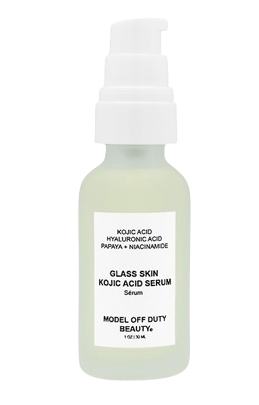
Model Off Duty Beauty Glass Skin Kojic Acid Serum ($50) size: 1 fl. oz.
Infused with Kojic Acid, this serum targets dark spots, hyperpigmentation, and uneven skin tone for a flawless “glass skin” effect. Suitable for all skin types, its lightweight formula absorbs quickly, providing intense hydration and promoting a smoother, more youthful appearance.
2. SKINCEUTICALS
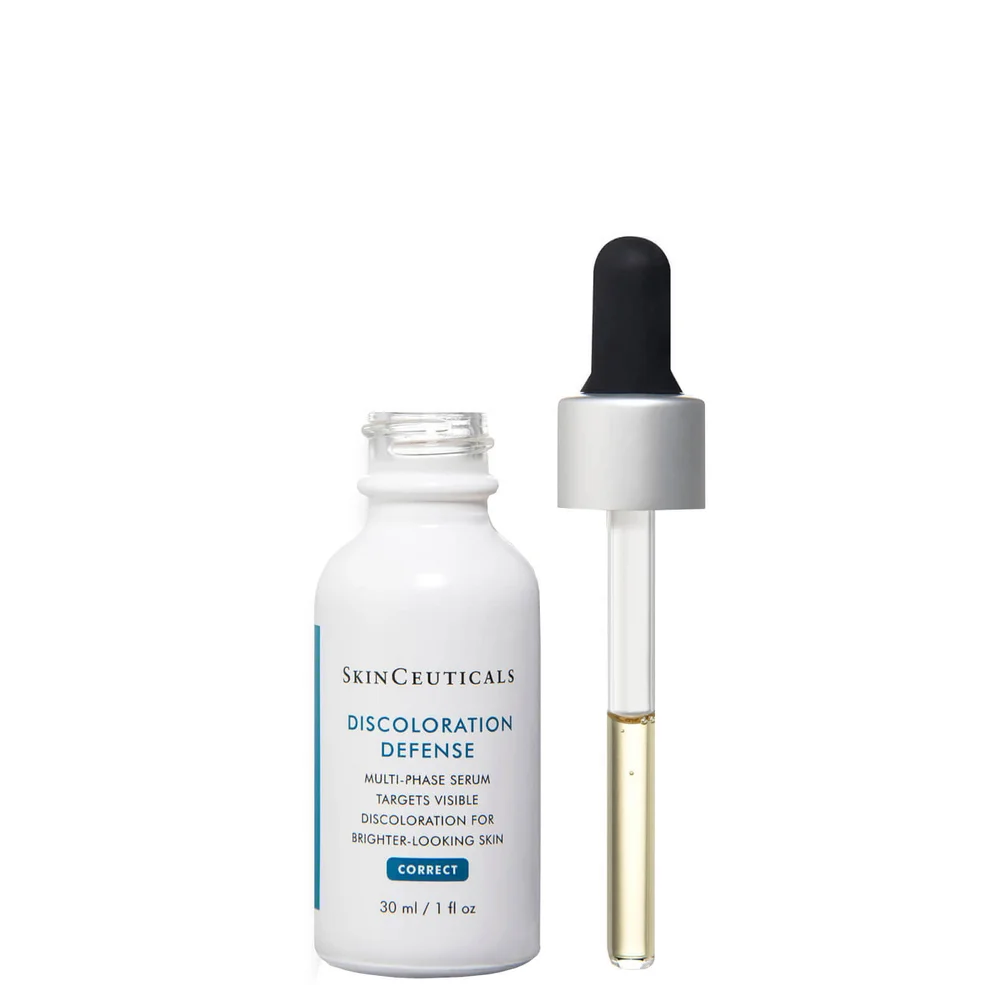
SkinCeuticals Discoloration Defense ($115.00) size: 1 fl. oz.
A Discoloration Defense, a dark spot corrector that reduces the appearance of hyperpigmentation caused by sun exposure, medical procedures, or acne.
3. DR. IDRISS
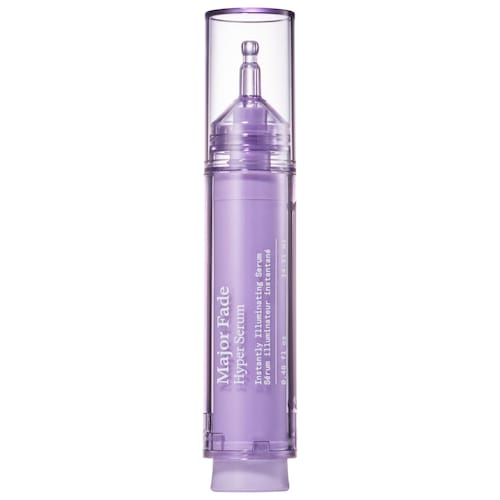
Dr. Idriss Major Fade Hyper Serum Dark Spot Treatment ($68) size: 0.96 oz
Major Fade Hyper Serum Dark Spot Treatment is an illuminating treatment serum that targets stubborn dark spots and improves the look of uneven skin tone.
4. GLYTONE
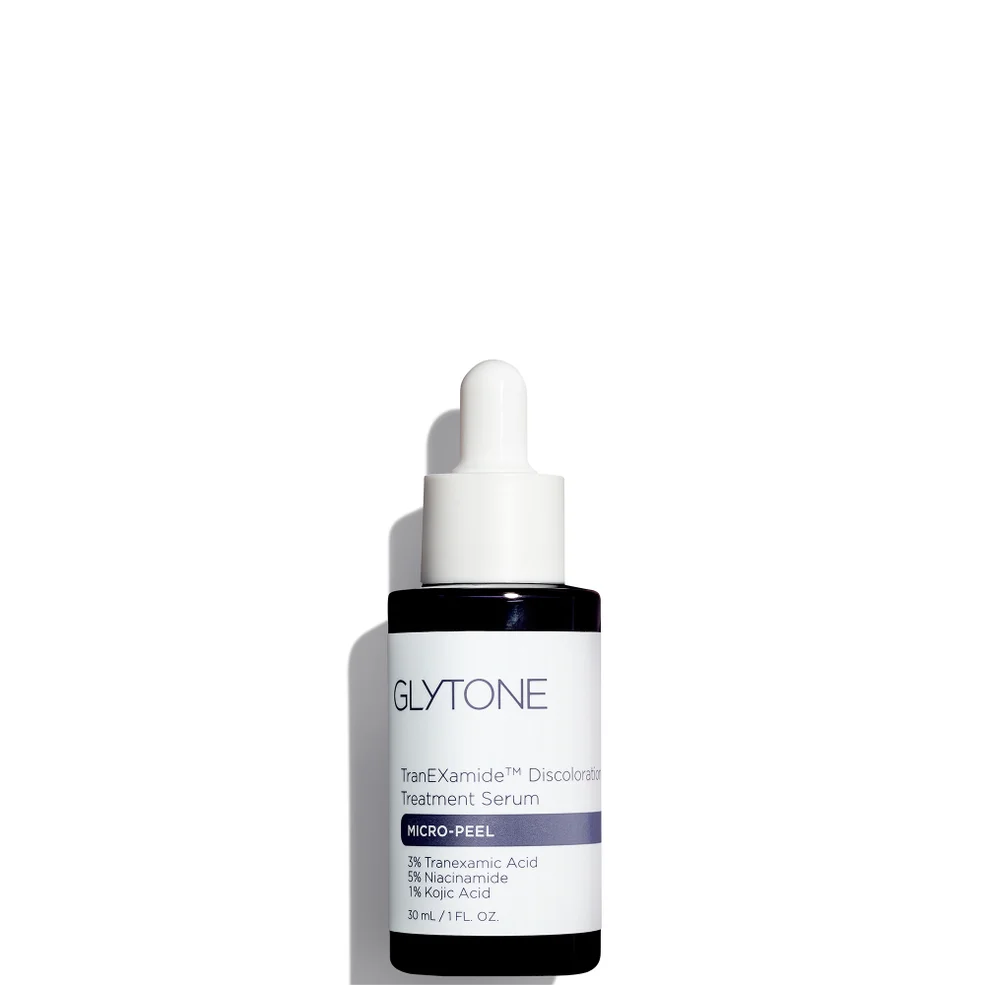
Glytone TranEXamide Discoloration Treatment Serum ($80) size: 1 fl. oz.
Concentrated brightening serum helps reduce the appearance of dark spots, post-blemish marks, and bright uneven skin tone caused by sun damage.
5. ALLIES OF SKIN
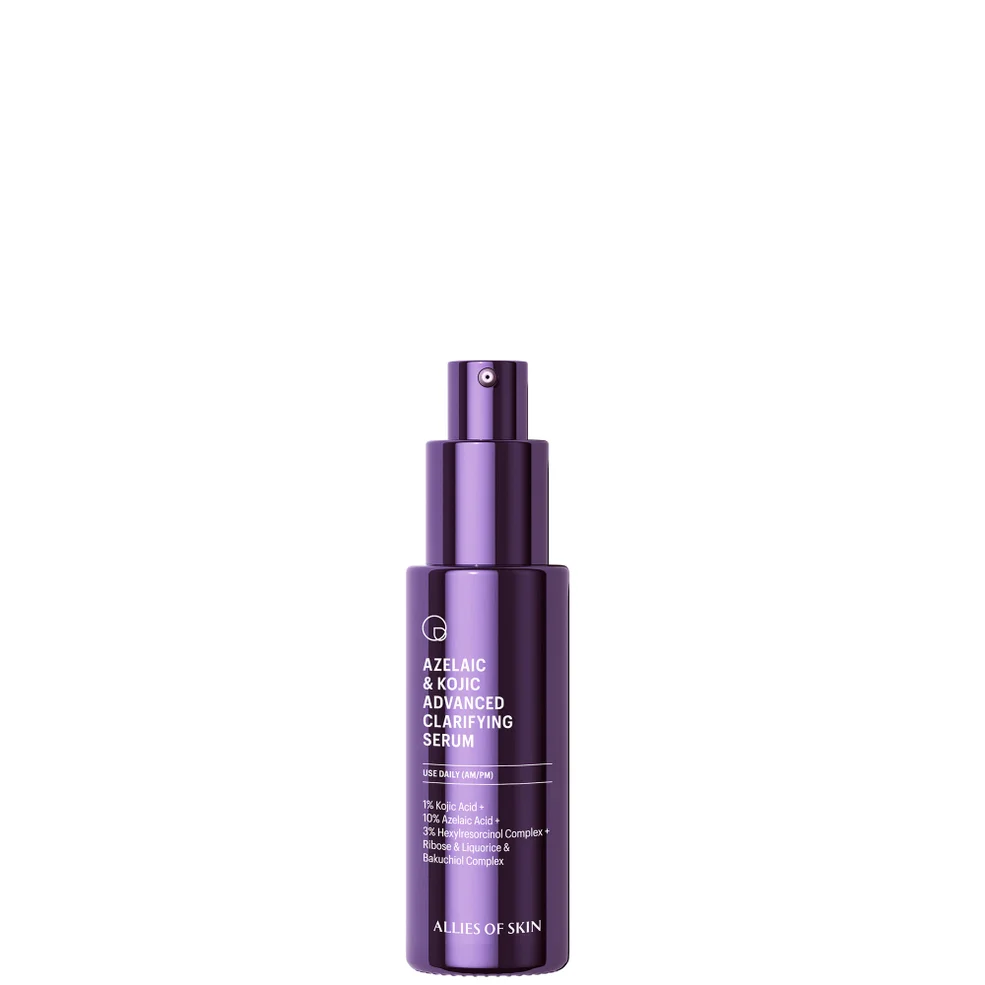
Allies of Skin Azelaic and Kojic Advanced Clarifying Serum ($99) size: 1 fl. oz.
Discover the Allies of Skin supercharged clarity serum, with 10% Azelaic Acid, 1% Kojic Acid, 3% Hexylresorcinol Complex, Ribose, Liquorice, and Bakuchiol Complex.

